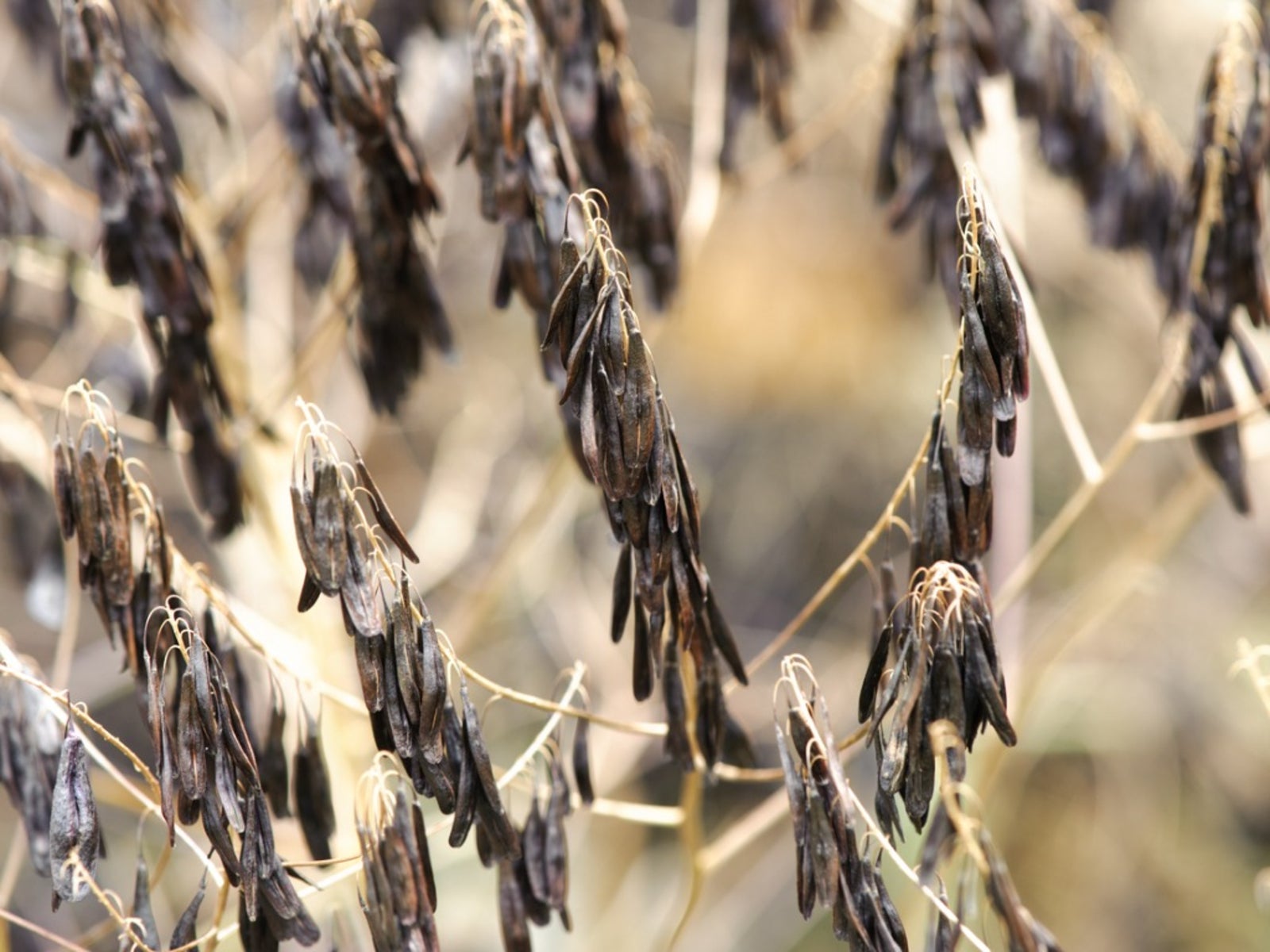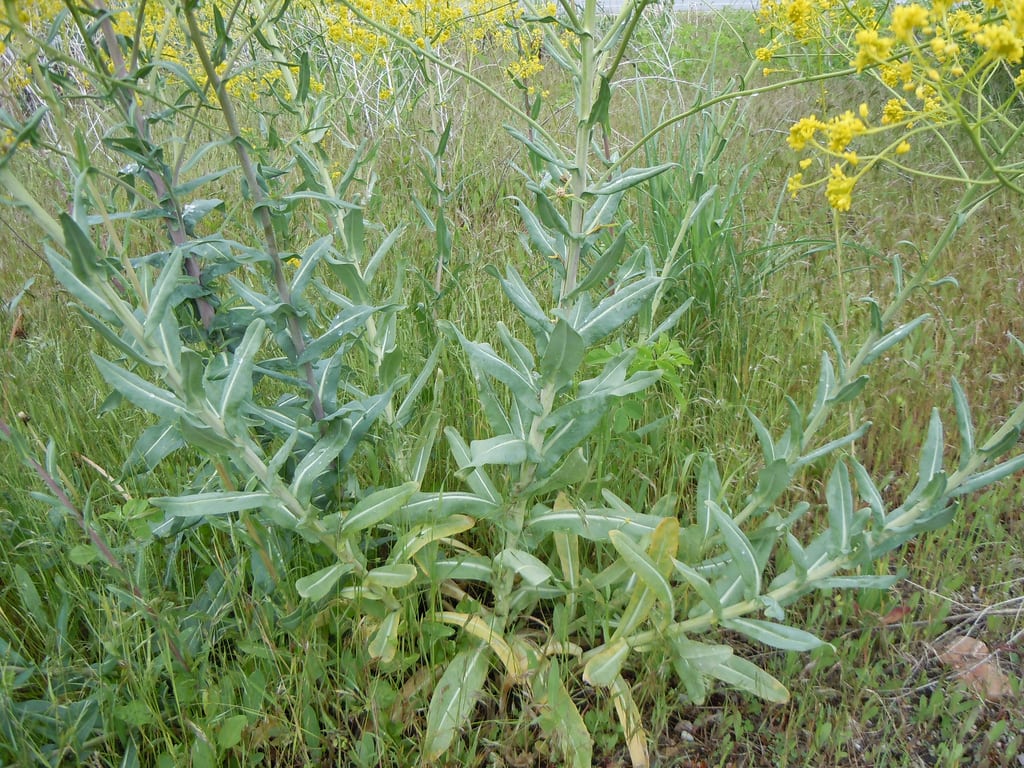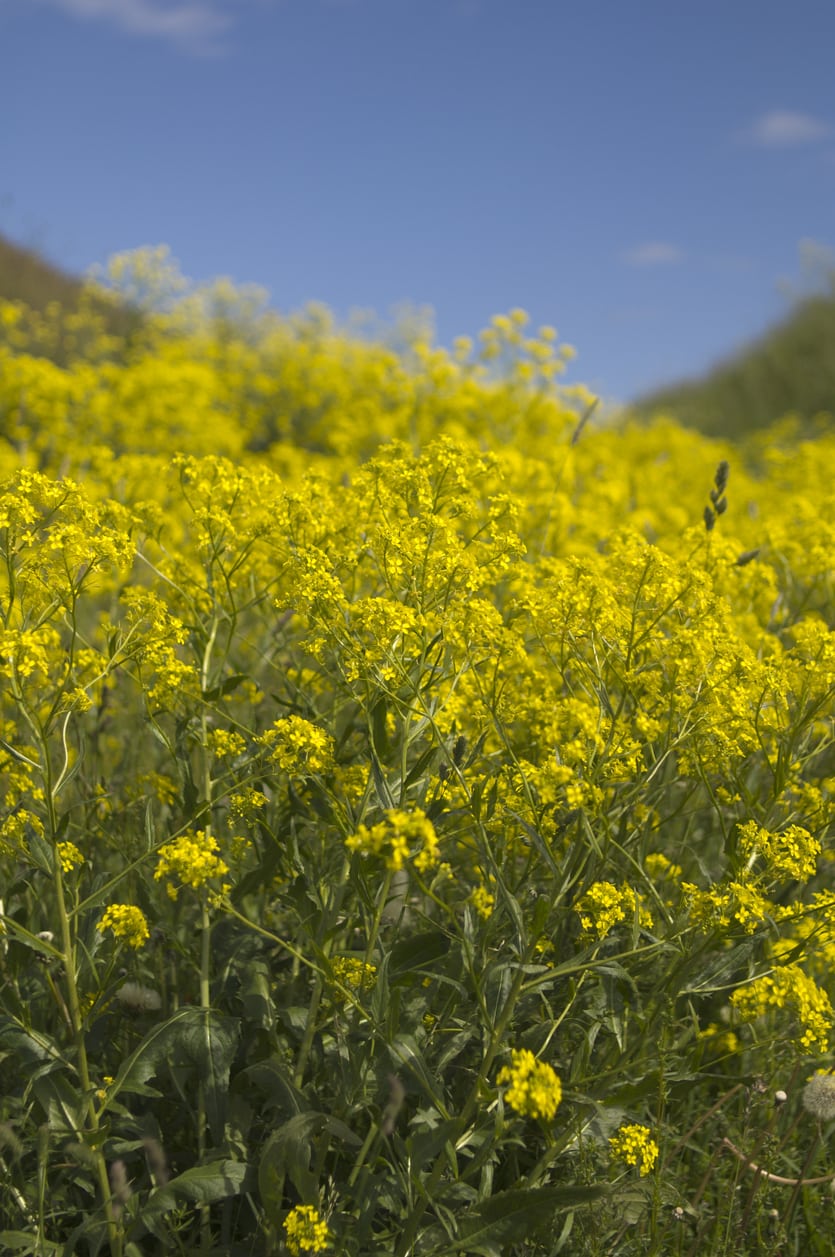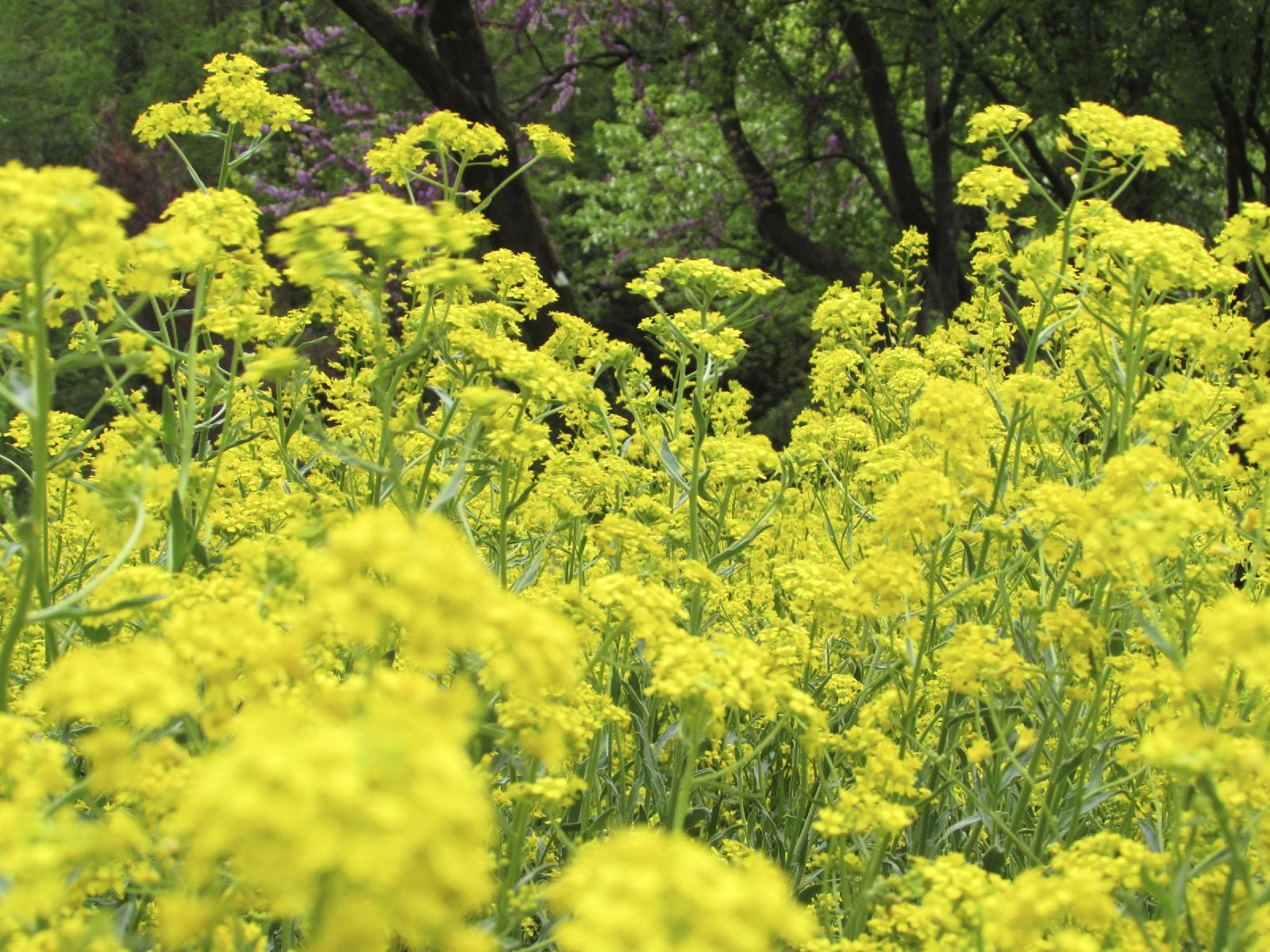Is Woad A Weed – How To Kill Woad Plants In Your Garden


Without woad plants, the deep indigo blue of ancient history would not have been possible. Who knows who discovered the plant's coloring properties but it is now known as dyer's woad. It is rarely used as a dye in the modern textile industry, but woad is now naturalized in much of North America, although it is native to Europe. Is woad a weed? That depends upon your definition of a weed. If you need help getting rid of woad, then this article may help.
Tips on Woad Control
We all seem to have a different notion of what is a weed. Personally, I feel a plant is a weed if it is invasive, choking out other plants or in the wrong location. Other gardeners may feel differently. For instance, a plant may be a weed if it is ugly, too big, or even has a bad odor. Woad grows wild in roadsides, ditches, pastures, fields, forest edges, and almost any other open space. It is a very competitive plant that can colonize rapidly. In cultivated landscapes, controlling dyer's woad is important or the plant may gradually take over. If you have decided woad is a weed, it is time to do something about it. Woad propagates itself though seed. An average plant produces 500 seeds (although some can exceed 1,000 seeds), which will disperse in a wide radius, establishing new colonies quickly. In warm to temperate regions, the plant is a short-lived perennial and can reproduce several times before finally dying back. Manual woad control is difficult due to the plant's deep taproot. The thick root can grow up to 5 feet (1.5 m.) deep, so controlling dyer's woad by digging can be difficult.
How to Kill Woad That is Out of Control
Hand pulling can diminish the root's strength, although the tough plant will usually return. Seed is dispersed by wind, water, animals, and machines. Cutting off the blooms before they turn to seed will minimize the spread of woad. Sowing weed-free seed and feeding livestock with weed-free hay can also help reduce the impact of the plant. In some situations, repeated tilling of an area is an effective way of getting rid of woad. Equipment and tool sanitation after use in a field contaminated with woad also reduces the spread of the plant. A rust fungus, Puccinia thlaspeos, will cause leaf distortion, stunting, and chlorosis, which diminishes woad's vitality and can eventually control the plant. Chemicals are a step of last resort, especially in food crops. There are several listed chemicals that are effective against woad plants. These need to be applied when seedlings are young for best control. Remember to follow all instructions when using chemicals and apply sprays when wind is calm and never near plants that can be harmed by the formula. Most state extension services will have guidelines on what and how to use herbicide chemicals safely for both the applier and the environment.
Gardening tips, videos, info and more delivered right to your inbox!
Sign up for the Gardening Know How newsletter today and receive a free copy of our e-book "How to Grow Delicious Tomatoes".

Bonnie Grant is a professional landscaper with a Certification in Urban Gardening. She has been gardening and writing for 15 years. A former professional chef, she has a passion for edible landscaping.
-
 Looking For Plants To Give You The Soft And Fuzzies? Try These 5 Fuzzy Leaf Plant Options
Looking For Plants To Give You The Soft And Fuzzies? Try These 5 Fuzzy Leaf Plant OptionsLovers of texture, drama, silver foliage and tactile plants will adore these special sensory garden additions. These fuzzy leaf plant options will leave you all aglow
By Susan Albert
-
 Get Ready For A Summer Of Hummers! Grow These Full Sun Hummingbird Plants and Flowers
Get Ready For A Summer Of Hummers! Grow These Full Sun Hummingbird Plants and FlowersIf you’re lucky enough to enjoy a sunny backyard, make sure you are maxing out on your pollinator opportunities and grow these full sun hummingbird plants and flowers
By Tonya Barnett
-
 Woad Propagation Methods: Tips For Growing New Woad Plants
Woad Propagation Methods: Tips For Growing New Woad PlantsDyer's woad is considered a noxious weed in some parts of the world, so you should check to make sure it's okay to grow in your area before planting. If it is safe, however, there remains one big question: how do you go about propagating woad plants? Find out here.
By Liz Baessler
-
 How To Plant Woad Seeds – Planting Woad Seeds In The Garden
How To Plant Woad Seeds – Planting Woad Seeds In The GardenWoad is not only a useful plant for dye, it also has a lovely, classic wildflower look, with clusters of yellow flowers followed by decorative blue-black seed clusters. To learn how to plant woad seeds in your own wildflower garden, click on the following article.
By Darcy Larum
-
 Woad Leaf Harvesting – How To Pick Woad Leaves For Dyeing
Woad Leaf Harvesting – How To Pick Woad Leaves For DyeingIt may not look like it, but in its plain looking green leaves there?s a very effective blue dye hiding. If you?ve already planted dyer?s woad, the next step in the process is harvesting the leaves. Learn more about when and how to pick woad leaves for dyeing in this article.
By Liz Baessler
-
 Woad Uses Beyond Dye: What Can Woad Be Used For In The Garden
Woad Uses Beyond Dye: What Can Woad Be Used For In The GardenThe uses of woad, for more than dyeing, are surprisingly plenty. Since ancient times, people have had many medicinal uses for woad, from treating a fever to healing lung infections and the measles and mumps viruses. Learn more in this article.
By Mary Ellen Ellis
-
 Dyeing With Woad – How To Get Dye From Woad Plants
Dyeing With Woad – How To Get Dye From Woad PlantsExtracting dye from woad takes a little practice, but it is worth it. When prepared properly, dye from woad results in a sky blue. You must follow all instructions for making woad dye or you might end up with greenish yellow tones. This article can help get you started.
By Bonnie L. Grant
-
 Woad Plant Care: Tips On Using Woad Plant Dyes
Woad Plant Care: Tips On Using Woad Plant DyesEastern Indian merchants began to introduce indigo to Europe where woad was the preferred dye. What is a woad plant and what other interesting information can we dig up? Is there a difference between indigo and woad plant dyes? Find out here.
By Amy Grant